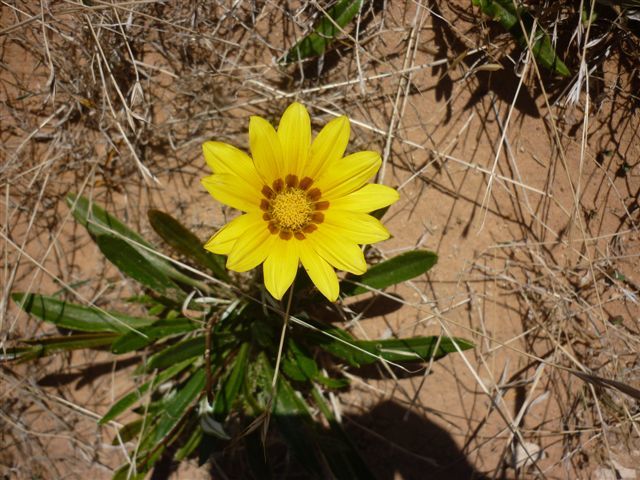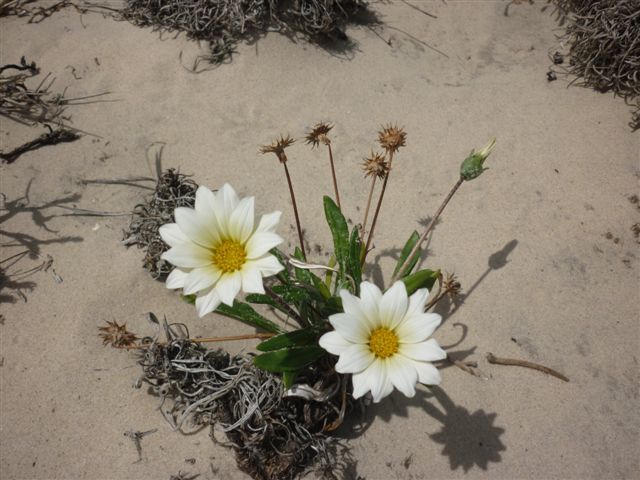Gazanias are a low-growing herb from South Africa. In Australia, they are a popular groundcover in the gardens. Consequently, this invasive plant has spread into Adelaide's coastal dunes, onto agricultural properties and along roadsides.
Gazania refers to a group of species under the genus Gazania. These species of plants can breed together and therefore hybridise (i.e. cross breed) freely, making them hard to tell apart. It’s not important to identify the exact species to control effectively.
Why are gazanias a problem?
Gazanias are a highly invasive and adaptable weed that grow well in most soil types. They readily establish in sand dunes and can dramatically alter the natural environment by stealing nutrients and moisture from native plants. By doing this, they take over, reducing biodiversity, which ultimately impacts our local plants and animals.

What do gazanias look like?
Gazanias are tough and low-growing, reaching an average height of 30 centimeters. They grow in clumps and can cover large areas.
The flower is brightly coloured and commonly have yellow or orange petals with dark or black bases (sometimes with a white dot). Other colours include cream, pink, red or maroon. Gazanias flower year round but mostly in spring and summer. Flower heads can be 6 to 12 cm across, and the stalk height can reach up to 30 cm. Their flowers close under low light and at night.
Gazania leaves range from 4 to 10 cm long and are slender with a pointed end and an indented central mid rib. The leaves vary from dark green and glossy, to silver/grey and hairy. The underside of the leaves are distinctly white/silver.

How do gazanias spread?
Gazanias produce lots of seed. One flower can create over 60 seeds, which can spread up to 1 km away from the wind. Seeds also germinate next to the parent plant, helping them take control of an area. Vehicles, mowing or flood waters can also spread the seeds. In some situations, gazanias can shoot out a new stem from its root system, creating a whole new plant.
Dumped garden waste that contains seeds or plant material can contribute to spreading this weed – this can even include grass clippings.

How to get rid of gazanias
Manual removal
The entire plant, including its root system, should be dug out while minimising disturbance to soil and surrounding vegetation.
It is important to correctly dispose of the plant to ensure flowers do not go to seed or the roots re-establish.
Where the plant can’t be removed, flowers heads should be taken off before setting seed. This will help prevent the plant spreading. A minimal level of control is to mow or brush-cut the flowers before they develop seed.
Chemical
For advice on chemical options go to PIRSA's Identifying declared weeds. Always read the label of any herbicide to ensure it is suitable for its intended purpose and can be used safely.
Care should be taken to avoid herbicide contact with native plants and any herbicide spraying in native vegetation should be left to qualified bushcare operators.
Control is most effective when the plant is actively growing with new lush foliage and flowering. Don’t spray when the plant is visibly under stress.
Are gazanias illegal?
Gazanias are a declared weed under the Landscape South Australia Act 2019. However these sterile cultivars (which do not spread) are exempt:
- GT20 (marketed as Double Gold TM)
- Sugaja (marketed as Sunset Jane TM)
- Sugamo (marketed as Montezuma TM).

Observations of weeds can be entered into iNaturalist, an app which can assist with identification of species.